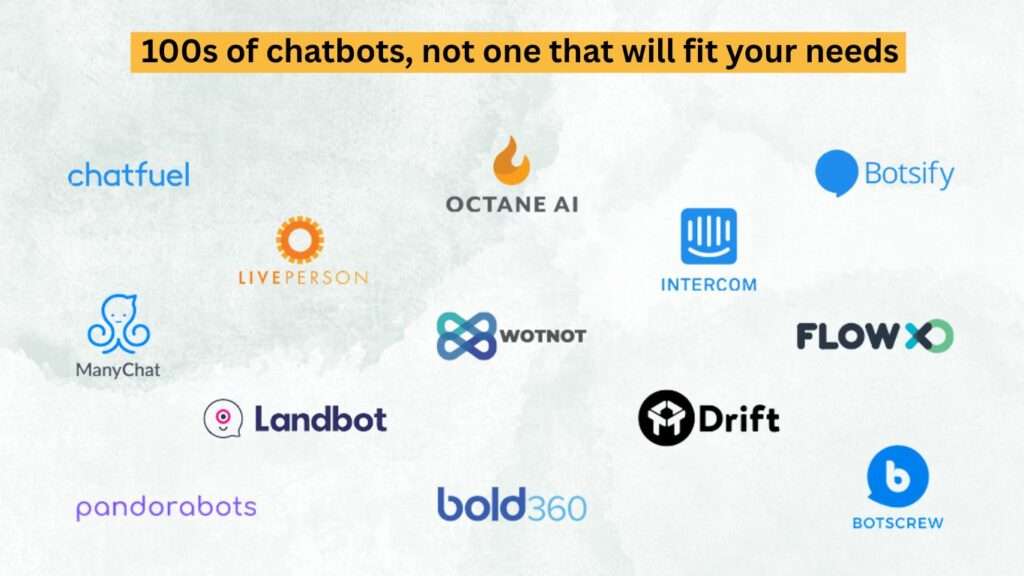Check out the primary reasons why chatbots fail and seek practical solutions to prevent such failures.

In today’s digital age, chatbots have emerged as powerful tools for enhancing customer service, streamlining operations, and driving business growth. However, not all chatbot implementations yield the desired results. Despite their potential, many chatbots fail to meet expectations, leaving users frustrated and businesses struggling to capitalize on their investments. So, what are the reasons behind chatbot failures, and how can organizations prevent them? Let’s see the top five reasons why chatbots fail and explore strategies to ensure their success.
Reason 1: Poor User Experience
One of the primary reasons why chatbots fail is a poor user experience. Users expect seamless interactions with chatbots, but when opposed to heavy interfaces, confusing navigation, or unhelpful responses, they quickly quit. A chatbot that fails to understand user inquiries, provides irrelevant answers or lacks personality can frustrate users and tarnish the brand’s reputation.
Prevention Strategy:
- Invest in User-Centric Design: Prioritize user experience (UX) design when developing chatbots. Design intuitive interfaces, clear navigation paths, and conversational flows that mimic natural human interaction.
- Implement NLP and ML Technologies: Leverage natural language processing (NLP) and machine learning (ML) algorithms to enhance the chatbot’s ability to understand user intent, context, and sentiment accurately.
- Gather User Feedback: Continuously gather feedback from users to identify pain points and areas for improvement. Incorporate user feedback to refine the chatbot’s design and functionality iteratively.
Reason 2: Inadequate Training Data
The effectiveness of a chatbot heavily relies on the quality and quantity of training data it receives during development. Inadequate or biased training data can lead to poor performance, misinterpretation of user queries, and inaccurate responses. Without sufficient data to learn from, chatbots may struggle to handle diverse user inquiries effectively.
Prevention Strategy:
- Curate Diverse Training Data: Ensure the chatbot’s training data is diverse, and representative of various user demographics, languages, and dialects. Include real-world examples to cover a wide range of user intents and scenarios.
- Regularly Update Training Data: Continuously update and expand the chatbot’s training data to keep pace with evolving user preferences, language trends, and industry-specific terminology.
- Implement Data Quality Checks: Conduct rigorous quality checks on training data to identify and mitigate biases, inaccuracies, or outliers that could impact the chatbot’s performance.

Reason 3: Lack of Personalization
Personalization plays a crucial role in delivering exceptional customer experiences. Generic, one-size-fits-all responses fail to resonate with users who crave personalized interactions tailored to their preferences, history, and context. Chatbots that lack personalization often come across as robotic and impersonal, failing to engage users on a meaningful level.
Prevention Strategy:
- Utilize User Profiling: Leverage user data and preferences to create personalized experiences. Collect user information proactively (with consent) and use it to customize responses, recommendations, and suggestions.
- Contextual Understanding: Equip chatbots with the ability to remember past interactions, preferences, and user history to provide contextually relevant responses. Incorporate machine learning algorithms to adapt and personalize interactions over time.
- Dynamic Content Generation: Implement dynamic content generation techniques to tailor responses based on user input, context, and intent in real time.
Reason 4: Lack of Integration
Chatbots often fail when they operate in independently, disconnected from other systems, databases, or channels within the organization. Without seamless integration with backend systems, CRM platforms, or third-party applications, chatbots may struggle to access relevant information, fulfill user requests, or provide accurate responses.
Prevention Strategy:
- Integrate with Backend Systems: Ensure the chatbot is seamlessly integrated with existing backend systems, databases, and CRM platforms to access real-time data and provide relevant information to users.
- API Integration: Leverage APIs (Application Programming Interfaces) to connect the chatbot with third-party applications, services, and databases. Enable the chatbot to perform tasks such as booking appointments, processing payments, or retrieving account information.
- Cross-Channel Integration: Enable the chatbot to operate across multiple channels, including websites, mobile apps, messaging platforms, and social media. Maintain consistency in user experience and data across different channels.
Reason 5: Insufficient Maintenance and Monitoring
Successful chatbot deployment doesn’t end with its launch; it requires ongoing maintenance, monitoring, and optimization to ensure peak performance. Chatbots that are left unattended or lack proactive monitoring may encounter chatbot failure issues, performance degradation, or security vulnerabilities over time, leading to user dissatisfaction and diminished ROI.
Prevention Strategy:
- Establish Performance Metrics: Define key performance indicators (KPIs) to measure the chatbot’s effectiveness, such as response time, user satisfaction, completion rate, and resolution rate. Continuously monitor these metrics to identify areas for improvement.
- Regular Updates and Maintenance: Schedule regular updates, patches, and maintenance activities to keep the chatbot’s software up-to-date and secure. Address bugs, glitches, or performance issues promptly to maintain optimal performance.
- Proactive Monitoring: Implement monitoring tools and alerts to detect anomalies, errors, or downtimes in real-time. Monitor user interactions, sentiment analysis, and feedback channels to identify emerging issues and address them proactively.

Conclusion
In conclusion, understanding the reasons behind chatbot failures is crucial for businesses aiming to deliver exceptional customer experiences. From inadequate personalization to poor language understanding, each factor presents unique challenges that can undermine chatbot effectiveness. However, by implementing proactive strategies such as investing in robust AI algorithms, focusing on user feedback, and ensuring regular maintenance and training, businesses can mitigate these risks and enhance the performance of their chatbot systems.
If you’re having a hard time with Chatbots, Beyondchats can help you by providing the best mix of chatbot and human interaction. It Offers no-code chatbot solutions in over 75 languages, From answering FAQs to scheduling appointments, Beyondchats maximizes every interaction’s potential for conversion.
Contact us now!





